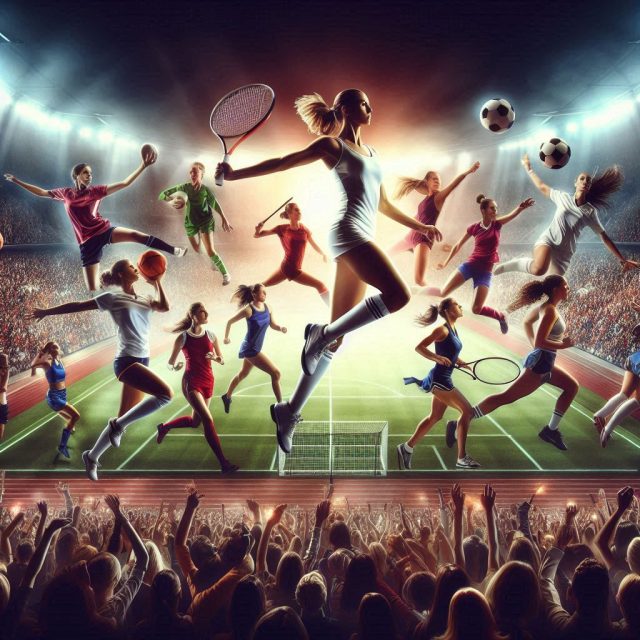Introduction
In the fast-paced world of sports, male athletes capture most of the limelight while their women counterparts are left quite off the camera view.
Despite the significant improvement in gender equality within the framework of sports, women’s sports have still not been rightly promoted and recognized.
This blog brings into focus the critical need for better promotion of women’s sports using the PAS-P framework: pointing out problems, stirring emotions, and hence coming up with actionable solutions.
The Underrepresentation of Women in Sports
Lack of Media Coverage
One of the most glaring issues in women’s sports is a lack of media coverage.
Studies have shown that women’s sports receive only a fraction of the media attention compared to men’s sports.
This disparity will not only confine it but also affect sponsorship opportunities and fan engagement.
Gender Pay Gap
Another important issue is that of the pay difference in women and men sports.
It’s common to find females competing in sports, who make way lesser money than their male colleagues, even when they experience greater or similar success.
A direct consequence can be found in the very low promotion and investment in women’s sports.
Lack of Sponsorship and Investment
Sponsorship deals and investments are some of the important features in the growth and development of sports.
Women’s sports, as a matter of fact, often enjoy less financial inputs. The aftermath of all these is poor improvements in facilities, training, and attracting talent.
Societal Stereotypes and Biases
Societal stereotypes and biases continue to undermine women’s sports.
The perception that women’s sports are less exciting or less competitive than men’s affects audience interest and further affects participation.
These biases run deep and will take conscious efforts to alter.
The Consequences of Neglect
Stunted Growth and Development
Lack of publicity and investment in women sport programs results in underdevelopment.
Besides, shortage of means adversely impacts female athletes to realize their full abilities.
Individual careers, besides the quality and competitiveness in which the sport is performed, get affected.
Missed Economic Opportunities
The underpromotion of women’s sports results in missed economic opportunities.
It is said that through ticket sales, the sale of merchandise, and broadcasting rights, women’s sports have the potential to amass millions of dollars.
However, these opportunities remain untapped due to the lack of visibility and investment.
Impact on Young Girls
Some of the consequences of underrepresentation of women in sports are that young girls will be affected at large.
Once the role models are invisible, then many young girls may feel discouraged from pursuing sports.
Consequently, it exposes them to a potential hazard for their physical health, self-esteem, and opportunities for personal development.
Perpetuation of Gender Inequality
Continuous negligence of women’s sports is a continuation of the root cause of gender inequality.
A message has been relayed that what they attain is less worthy than what their male counterparts attain-this only overbolsters harmful stereotypes and biases.
This does not relate to sports only but also to all domains within society.
Women’s Sports Promotion
Increased Media Exposure
Overcoming the problem of no or minimum media coverage involves an undertaking by sports channels and the media to treat women’s sports with equal importance.
This includes more transmission of women’s matches, females to present sports-related news programs, and encouraging female viewership regarding various sports.
The social media sites can also be appropriately utilized for increasing women’s sports awareness.
Closing the Pay Gap between Genders
In this regard, efforts toward closing the gender pay gap have to come from multiple layers.
Sports organizations and their governing bodies should implement policies for equal pay to male and female athletes for their performances.
Sponsorship deals and prize money should be distributed equitably, reflecting the respective achievements of the athletes in question.
Increase in Sponsorship and Investment
For women’s sports to acquire more sponsorship and investment, effective marketing strategies should be embraced.
This means that women’s sports should show the best talent, dedication, and achievement of the female athletes.
Investments by brands and companies should be welcome in women’s sports, having in mind full-well that there is a potential good brand association and market growth.
Social Challenge of Stereotyping
This involves changing many social stereotypes and biases through education and awareness campaigns that need to be addressed at the level of schools, communities, and sports organizations so as to make people appreciate and enjoy women’s sports.
Sharing the stories of successful female athletes may serve as a harbinger of change in perception.
Supporting Grassroots Programs
This of course is important in the long-term development of women’s sports since it creates room for little girls to start engaging in sporting activities and later building a career from it.
Such programs require support at all levels, from the local government, through schools down to the sports organizations.
Leveraging Technology and Innovation
Technology and innovation also have a very important role in the popularization of women’s sports.
Virtual reality, augmented reality, and other digital platforms may increase the view and bring in newer audiences.
Data analytics can be used to understand the preference of audiences and their marketing strategies accordingly.
Conclusion
The development of women’s sports is not a matter of equity, but an absolute necessity for the development of sports as a whole.
Indeed, the media presence of women’s sports, the pay gap in sponsorship, and patriarchal biases within society address important issues that need to be tackled in order to visualize a more inclusive and equitable world of sports.
In addition to the field, the development of women’s sports contributes toward economic development, social progress, and female empowerment across the globe.





